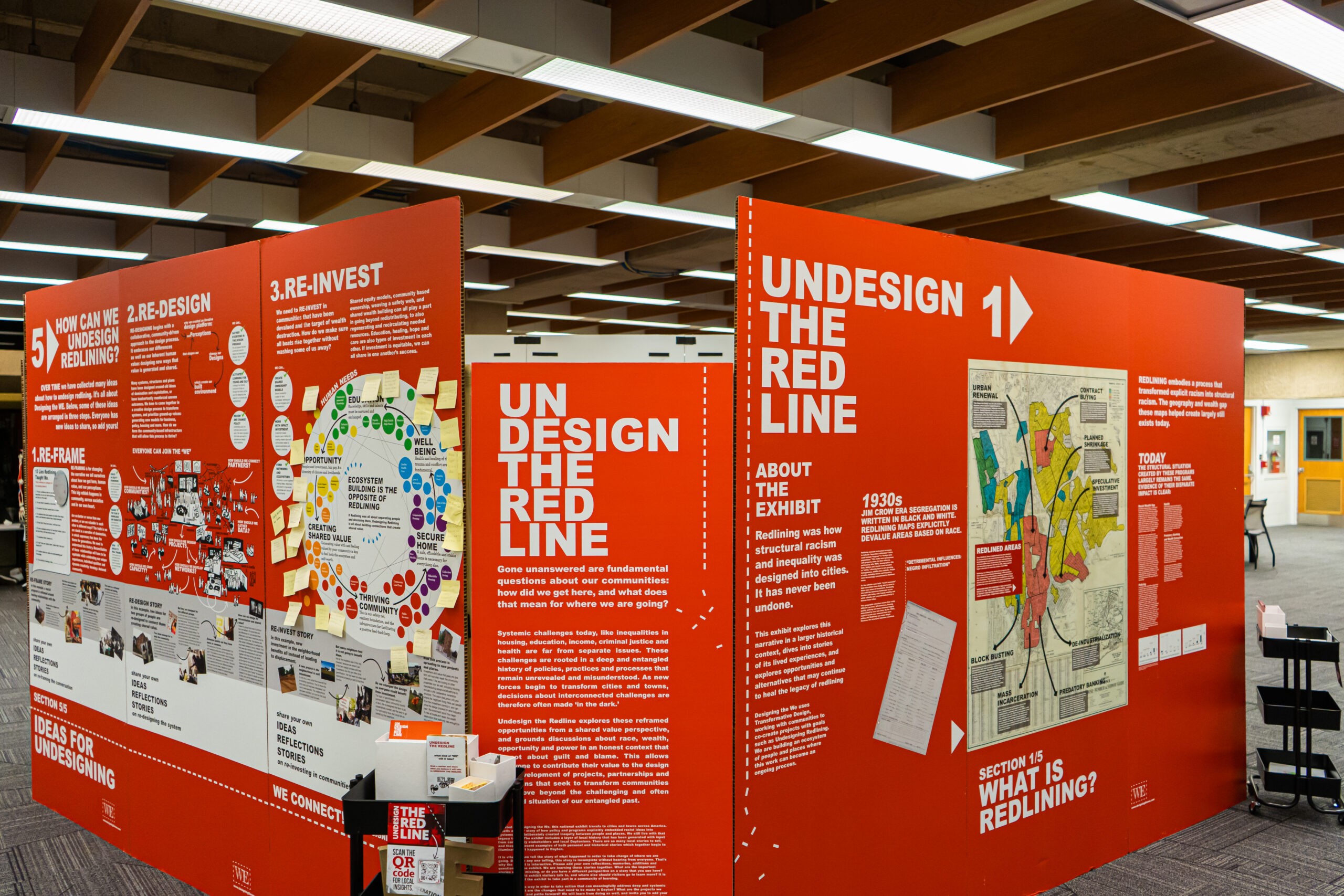
Undesign the Red Line | Phot by Qusai Takuri | The Wright State Guardian
In collaboration with the Bolinga Center and College of Liberal Arts, Wright State University (WSU) presents “Undesign the Redline,” an interactive exhibit paired with educational events on the history of redlining.
Redlining and its history
Redlining is defined as refusing (a loan or insurance) to someone because they live in an area deemed to be a poor financial risk. This is often based on race, nationality or income.
The 1930s officially cemented these “redlined” maps into practice. The Fair Housing Act of 1968 officially banned redlining, but the effects of this discrimination are still felt in the Dayton area.
John R. Logan, Ph.D. at Brown University, gave a lecture, attended by 50+ WSU students, on Feb.16 concerning redlining and segregation.
“In Dayton in 1940, it reached .93 [Index of Dissimilarity between black and white]. So that’s a measure of segregation, it is really highly segregated. Now, beginning in 1900, there was a lot of black population, very highly segregated, and it just got worse over time,” Logan said.
A prevalent area of thought was that black individuals would spread disease. While today’s society does not reflect these views, the damage has been done.
WSU and redlining
11.5% of WSU students are Black or African American (829 students) in comparison to Dayton’s population of 37.9% Black or African American. Dayton has experienced a -5.01% decrease in the Black or African American population from 2010, reflective of the same trend from 2000 to 2010.
Kristina Scott, CEO of Learn to Earn Dayton, recently hosted the Undesign the Redline exhibit. Learn to Earn Dayton serves Montgomery county children to foster success.
“If you look at the way public schools are funded all over the country, it’s based on property taxes, and property taxes, in turn, are based on home values and so you have communities, no data. If you look at the redlining map with the city of Dayton and look at the surrounding communities, you can see a huge differential in housing costs in the city of Dayton and then in the communities outside the city,” Scott said.
Scott further elaborated on how this will affect university students.
“Redlining and the inequities in Black homeownership have been tied. Research is tied to the disproportionate burden of student loans on Black college students and college graduates,” Scott said.
Quatez Scott, the Intercultural Specialist of the Bolinga Black Cultural Resources Center, provides educational activities to WSU students year-round. While the Bolinga Center supports the many Black student organizations on campus, it can still be hard to move beyond those barriers.
“One staggering statistic I recently came across is that roughly 75% of the most economically disadvantaged communities can be traced back to redlining in the 1930s. And once human beings are forced into certain social tracks in our society, it’s difficult to move beyond those tracks,” Scott said.
Exhibit
The nationally recognized and interactive “Undesign the Redline” exhibit is located temporarily on the Dunbar Library’s second floor during February. It is composed of five sections; introduction to redlining, examples of localized redlining maps, a historical timeline to today and a vision for the future.
Students are encouraged to leave their thoughts through papers provided at the exhibit.
“It prompts reflection, even to a physical point of writing down thoughts on a post-it note and sharing it with others who are viewing it,” Mandy Shannon, Associate University Librarian, said.
Professors were encouraged and followed through with providing extra credit opportunities to students who toured the exhibit. Professors can schedule guided tours on the Undesign the Redline webpage. Class tours can be scheduled regardless of topic, prime examples being history or public health.
Ohio House Bill 327, which would prohibit teaching “diverse concepts,” would possibly inhibit the teaching of subjects such as redlining.
It is not yet decided how this bill will proceed.
For more Undesign the Redline and Black History Month events students should visit the Undesign the Redline webpage and the Engage events tab.
The following website provides historical redlining maps for most cities in the United States, including Dayton: Mapping Inequality (richmond.edu)
